
LOADING ...
In response to evolving domestic opinion, eMedals Inc has made the conscious decision to remove the presentation of German Third Reich historical artifacts from our online catalogue. For three decades, eMedals Inc has made an effort to preserve history in all its forms. As historians and researchers, we have managed sensitive articles and materials with the greatest of care and respect for their past and present social context. We acknowledge the growing sentiments put forth by the Canadian public and have taken proactive actions to address this opinion.
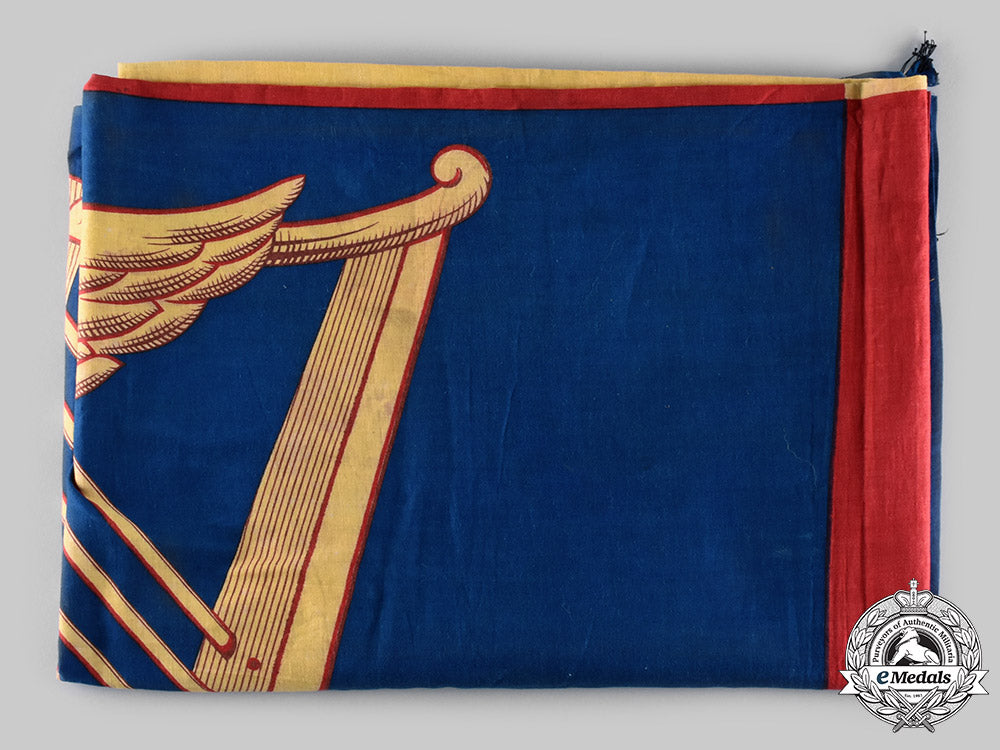
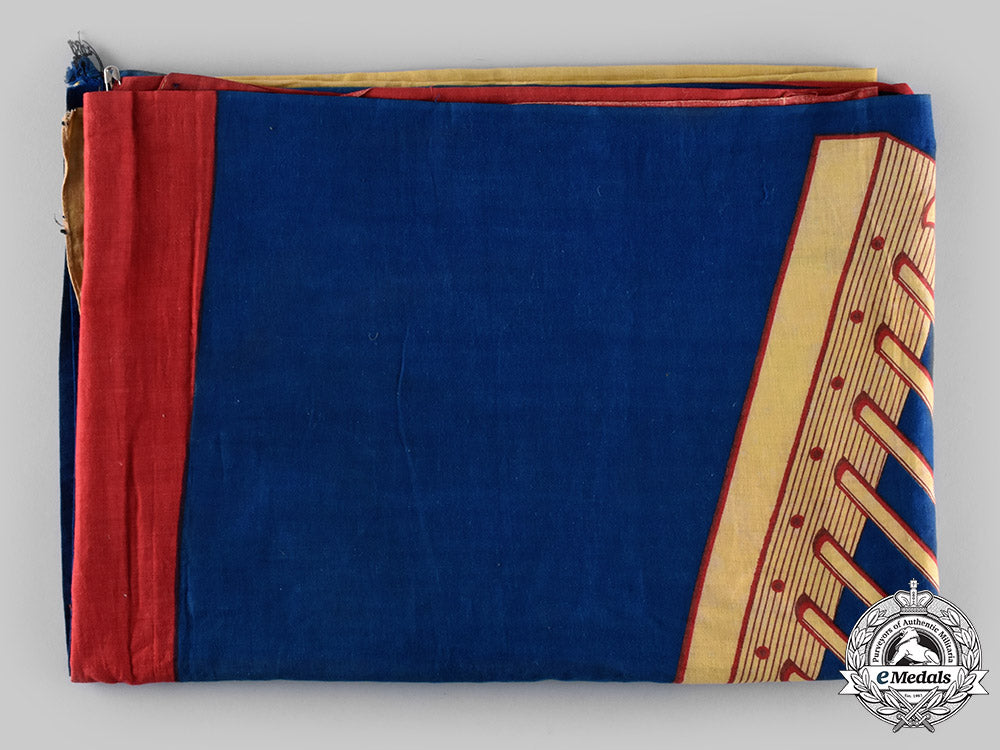
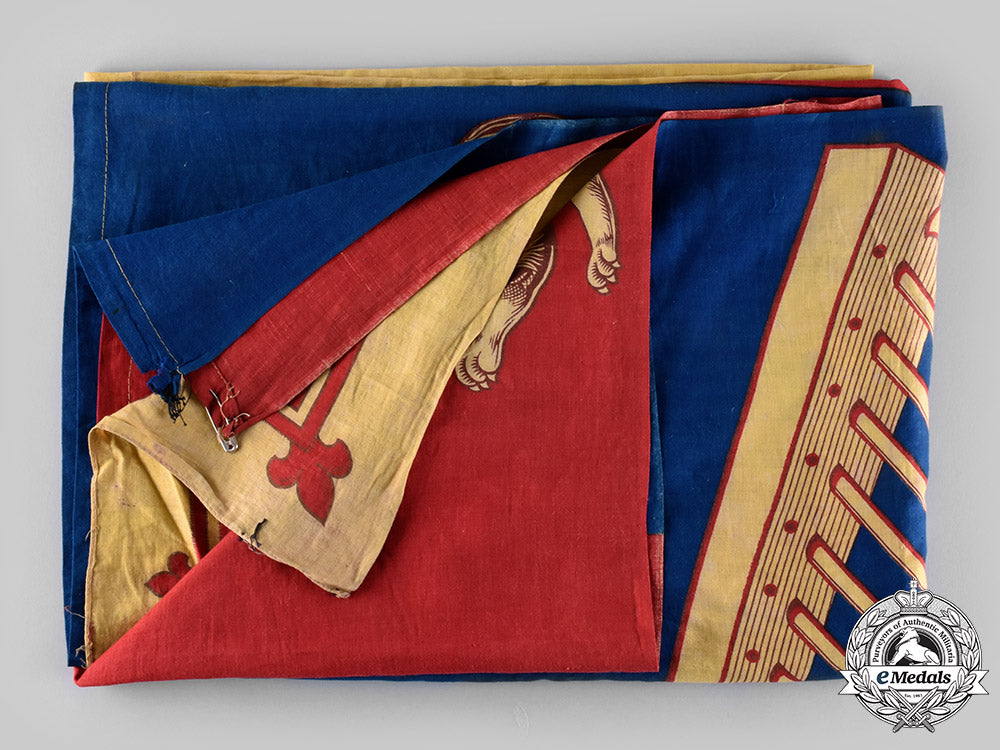
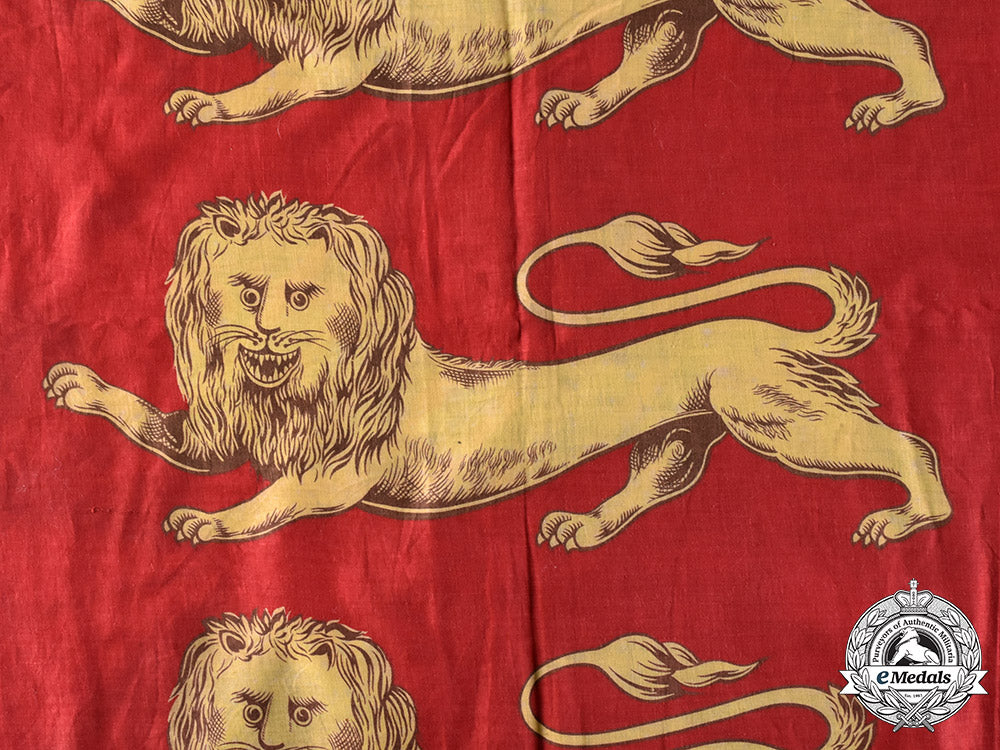
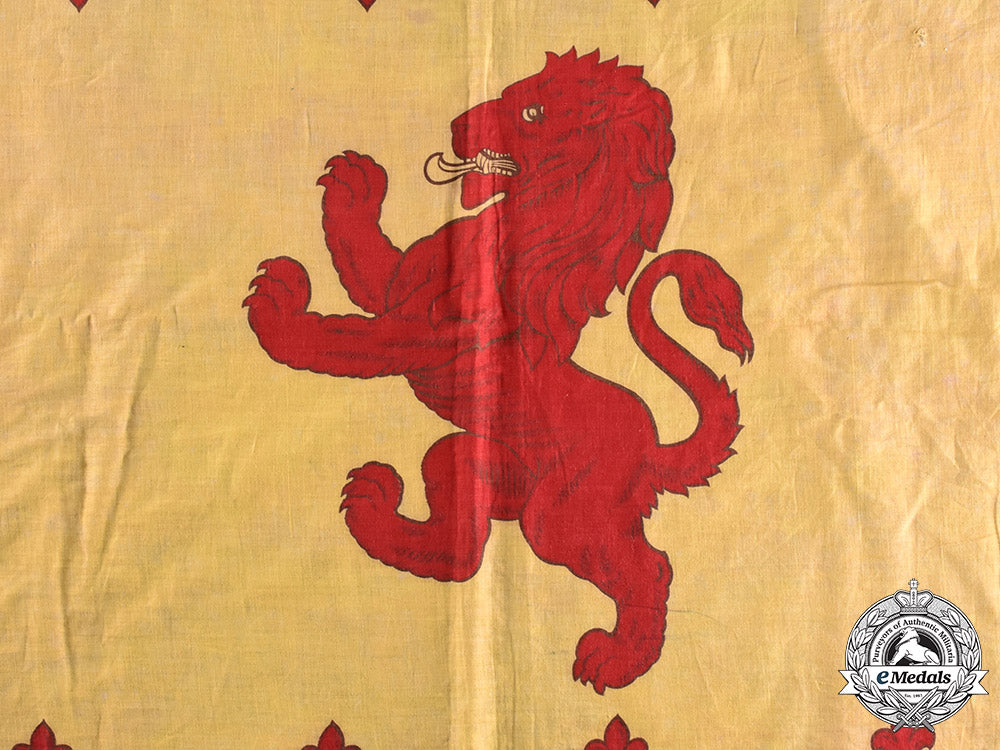
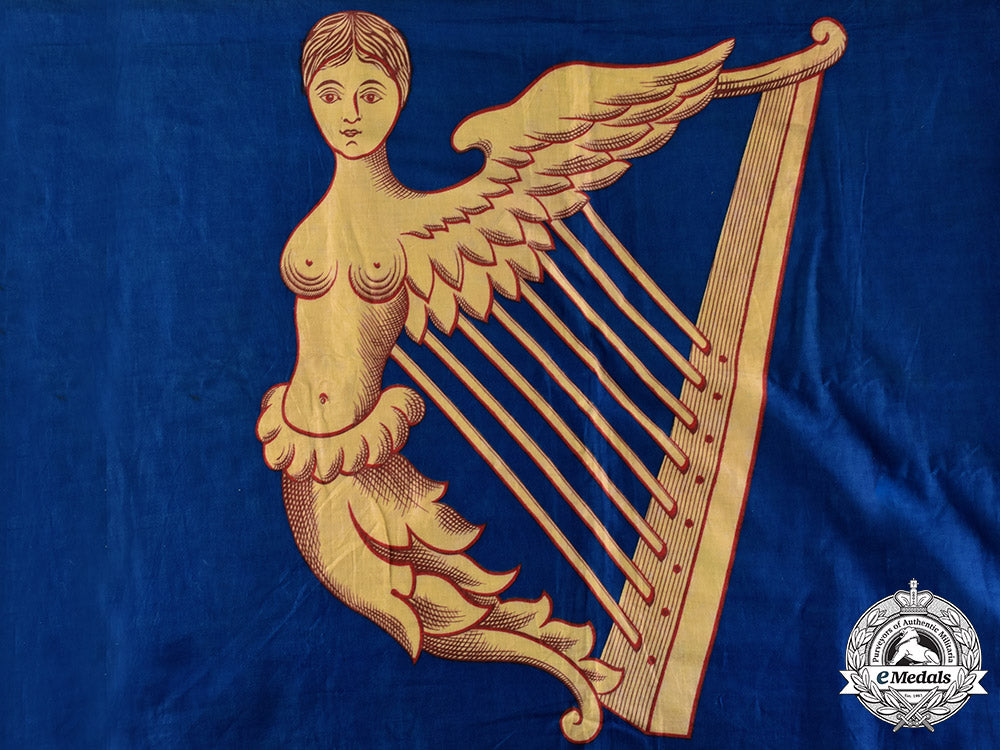
United Kingdom. A Royal Standard, C.1880
United Kingdom. A Royal Standard, C.1880
SKU: ITEM: GB7004
Current Bid:
Your Max Bid:
Bid History:
Time Remaining:
Couldn't load pickup availability
Shipping Details
Shipping Details
eMedals offers rapid domestic and international shipping. Orders received prior to 12:00pm (EST) will be shipped on the same business day.* Orders placed on Canadian Federal holidays will be dispatched the subsequent business day. Courier tracking numbers are provided for all shipments. All items purchased from eMedals can be returned for a full monetary refund or merchandise credit, providing the criteria presented in our Terms & Conditions are met. *Please note that the addition of a COA may impact dispatch time.
Shipping Details
eMedals offers rapid domestic and international shipping. Orders received prior to 12:00pm (EST) will be shipped on the same business day.* Orders placed on Canadian Federal holidays will be dispatched the subsequent business day. Courier tracking numbers are provided for all shipments. All items purchased from eMedals can be returned for a full monetary refund or merchandise credit, providing the criteria presented in our Terms & Conditions are met. *Please note that the addition of a COA may impact dispatch time.
Description
Description
Screen-printed in red, blue, yellow and brown inks on a white cotton base, the flag designed with four quadrants: the first and fourth quadrants representing the ancient Kingdom of England and contain three gold lions (or "leopards"), passant guardanton (striding and facing front on) on a red field (the lions shorter than the stretched versions that were instituted in 1907 with the flag's revisions), the second quadrant representing the ancient Kingdom of Scotland and contains a red lion rampant on a gold field (the lion revised in 1907), the third quadrant represents the ancient Kingdom of Ireland and contains a version of the gold harp from the coat-of-arms of Ireland on a blue field (with the face of the woman on the harp facing front on, as used during the Victorian period), a hoist sleeve sewn in place on the left side, a large safety pin attached at the top of the sleeve, measuring 1,720 mm (w) x 1,240 mm (h), a tear evident in the blue field at the bottom of the hoist sleeve, a few holes scattered throughout, lightly soiled, traces of black threading remain on the right side from a previous hanging, very fine.
Footnote: The Royal Standards of the United Kingdom refers to either one of two similar flags used by Queen Elizabeth II in her capacity as Sovereign of the United Kingdom and its overseas territories. Two versions of the flag exist, one for general use in England, Northern Ireland, Wales and overseas; and the other for use in Scotland. Although almost universally called a standard, such flags when used in the United Kingdom are banners of arms, as they comprise the shield of the Royal Arms. Since the 1960s, Queen Elizabeth II has had several personal flags designed for her use as sovereign of certain Commonwealth realms. These heraldic flags are similar to those of the British "Royal Standard" in being banners of the nation's arms but feature a device found in the Queen's general personal flag (a blue disc containing a wreath of gold roses encircling a crowned letter "E"'). The Royal Standard of the United Kingdom is flown when the Queen is in residence in one of the royal palaces and on her car, ship or aeroplane. It may be flown on any building, official or private, during a visit by the Queen, if the owner or proprietor so requests. It famously replaces the Union Flag over the Palace of Westminster when the Queen visits during the State Opening of Parliament. The Royal Standard was flown aboard the royal yacht when it was in service and the Queen was on board. The only church that may fly a Royal Standard, even without the presence of the Sovereign, is Westminster Abbey, a Royal Peculiar. The Royal Standard is flown at royal residences only when the sovereign is present. If the Union Flag flies above Buckingham Palace, Windsor Castle or Sandringham House, it signals that the Queen is not in residence. In 1934, King George V permitted his subjects in Scotland to display the ancient Royal Standard of Scotland as part of his silver jubilee. Today, it flies above Holyrood Palace and Balmoral Castle when the Queen is not in residence. When the Queen attends Parliament at the Palace of Westminster, the Royal Standard flies from Victoria Tower. Unlike the Union Flag, the Royal Standard is never flown at half-mast, even after the demise of the Crown, as there is always a sovereign on the throne.
Description
Screen-printed in red, blue, yellow and brown inks on a white cotton base, the flag designed with four quadrants: the first and fourth quadrants representing the ancient Kingdom of England and contain three gold lions (or "leopards"), passant guardanton (striding and facing front on) on a red field (the lions shorter than the stretched versions that were instituted in 1907 with the flag's revisions), the second quadrant representing the ancient Kingdom of Scotland and contains a red lion rampant on a gold field (the lion revised in 1907), the third quadrant represents the ancient Kingdom of Ireland and contains a version of the gold harp from the coat-of-arms of Ireland on a blue field (with the face of the woman on the harp facing front on, as used during the Victorian period), a hoist sleeve sewn in place on the left side, a large safety pin attached at the top of the sleeve, measuring 1,720 mm (w) x 1,240 mm (h), a tear evident in the blue field at the bottom of the hoist sleeve, a few holes scattered throughout, lightly soiled, traces of black threading remain on the right side from a previous hanging, very fine.
Footnote: The Royal Standards of the United Kingdom refers to either one of two similar flags used by Queen Elizabeth II in her capacity as Sovereign of the United Kingdom and its overseas territories. Two versions of the flag exist, one for general use in England, Northern Ireland, Wales and overseas; and the other for use in Scotland. Although almost universally called a standard, such flags when used in the United Kingdom are banners of arms, as they comprise the shield of the Royal Arms. Since the 1960s, Queen Elizabeth II has had several personal flags designed for her use as sovereign of certain Commonwealth realms. These heraldic flags are similar to those of the British "Royal Standard" in being banners of the nation's arms but feature a device found in the Queen's general personal flag (a blue disc containing a wreath of gold roses encircling a crowned letter "E"'). The Royal Standard of the United Kingdom is flown when the Queen is in residence in one of the royal palaces and on her car, ship or aeroplane. It may be flown on any building, official or private, during a visit by the Queen, if the owner or proprietor so requests. It famously replaces the Union Flag over the Palace of Westminster when the Queen visits during the State Opening of Parliament. The Royal Standard was flown aboard the royal yacht when it was in service and the Queen was on board. The only church that may fly a Royal Standard, even without the presence of the Sovereign, is Westminster Abbey, a Royal Peculiar. The Royal Standard is flown at royal residences only when the sovereign is present. If the Union Flag flies above Buckingham Palace, Windsor Castle or Sandringham House, it signals that the Queen is not in residence. In 1934, King George V permitted his subjects in Scotland to display the ancient Royal Standard of Scotland as part of his silver jubilee. Today, it flies above Holyrood Palace and Balmoral Castle when the Queen is not in residence. When the Queen attends Parliament at the Palace of Westminster, the Royal Standard flies from Victoria Tower. Unlike the Union Flag, the Royal Standard is never flown at half-mast, even after the demise of the Crown, as there is always a sovereign on the throne.
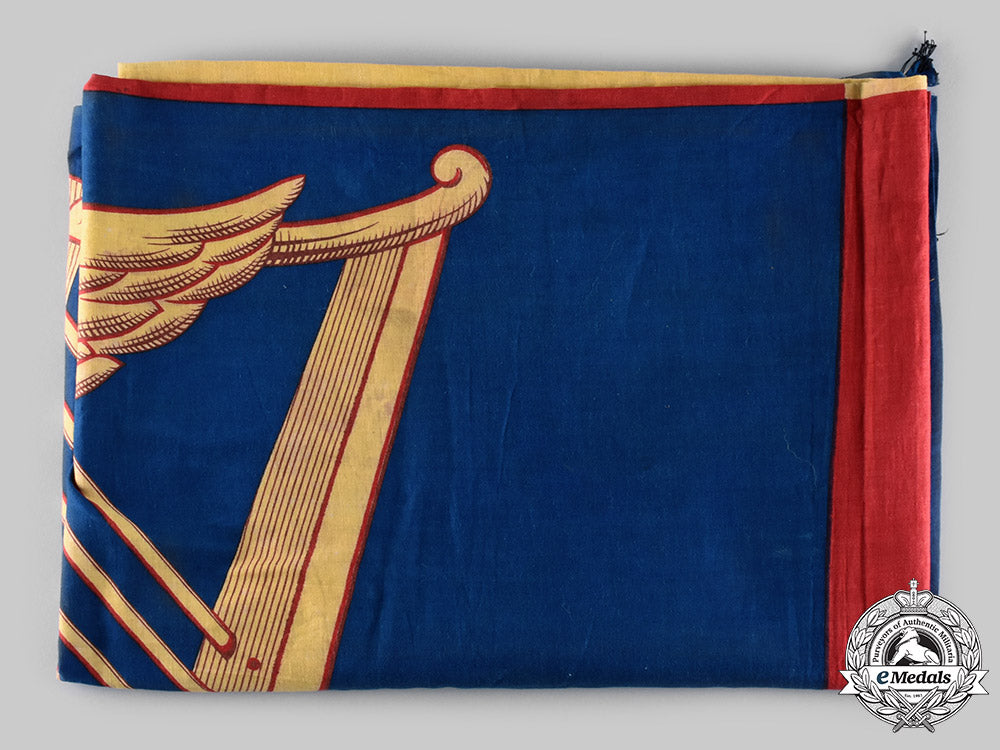
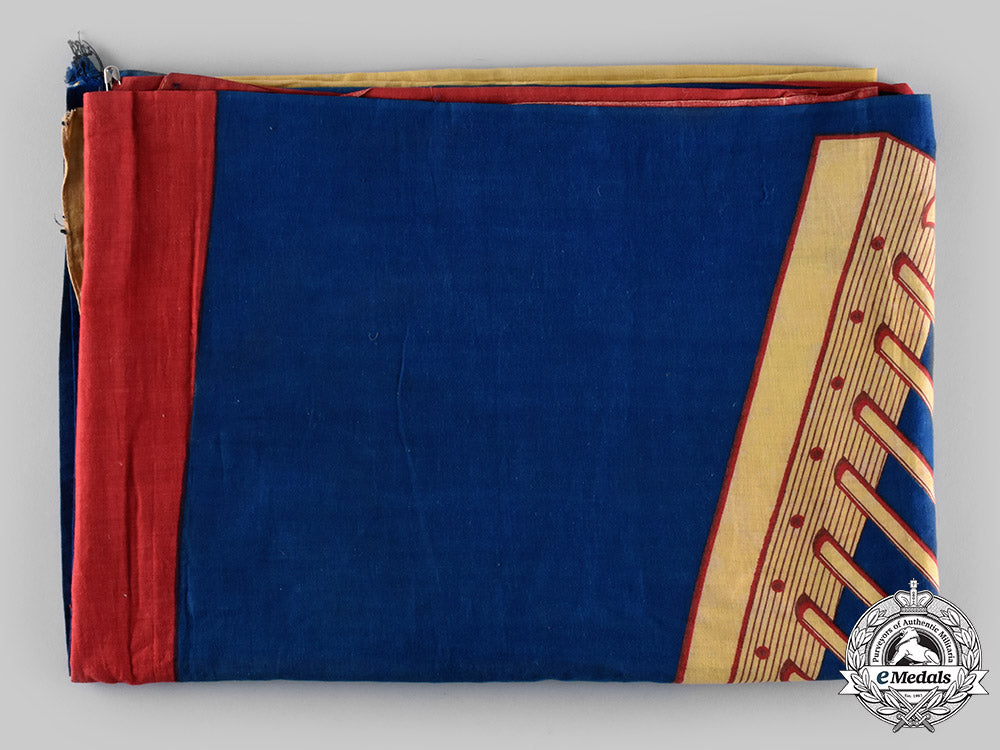
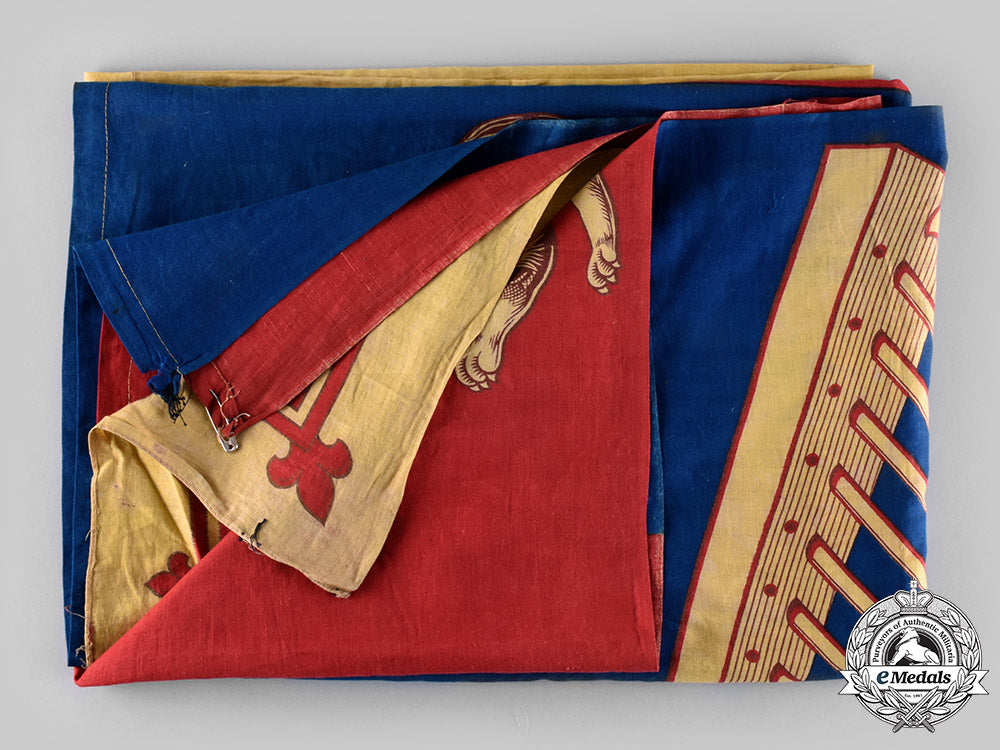
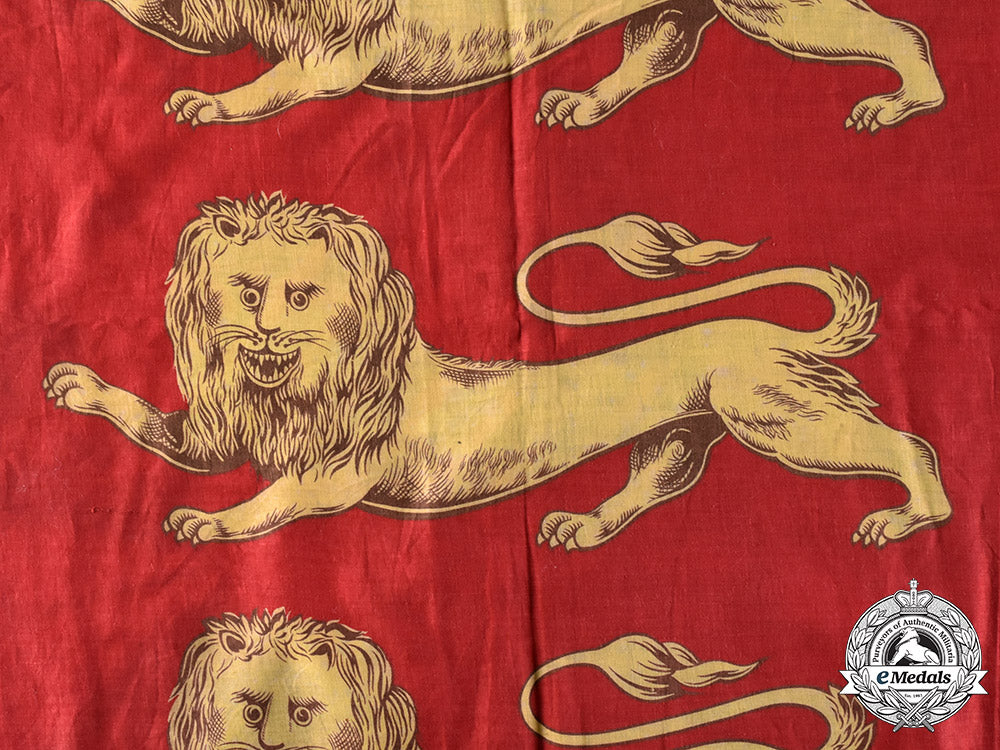
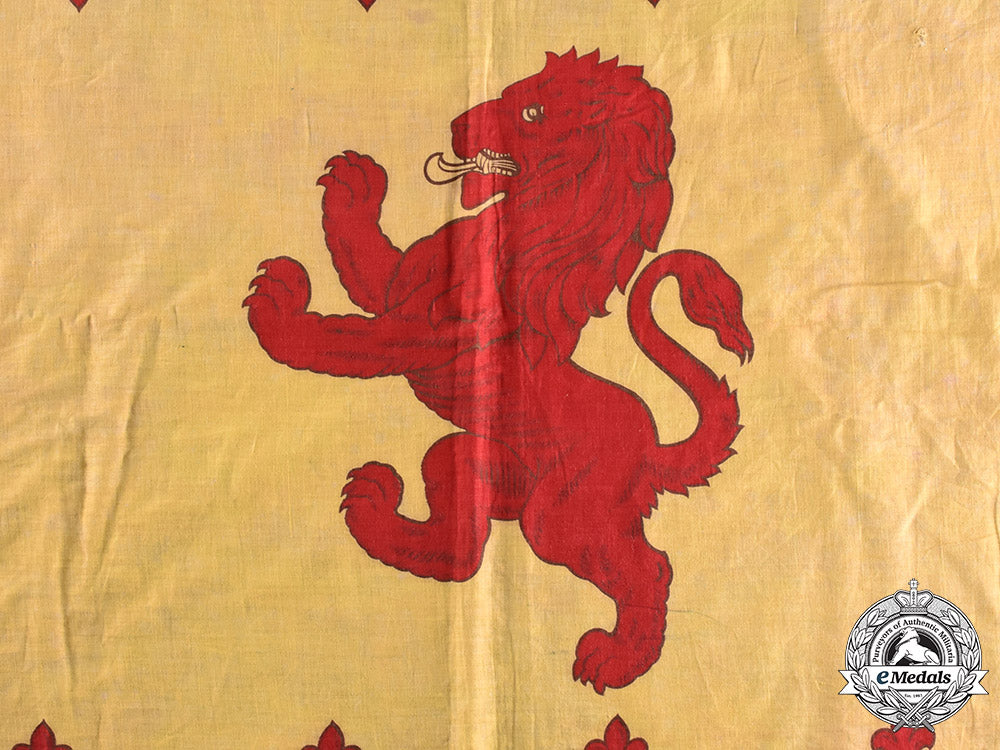
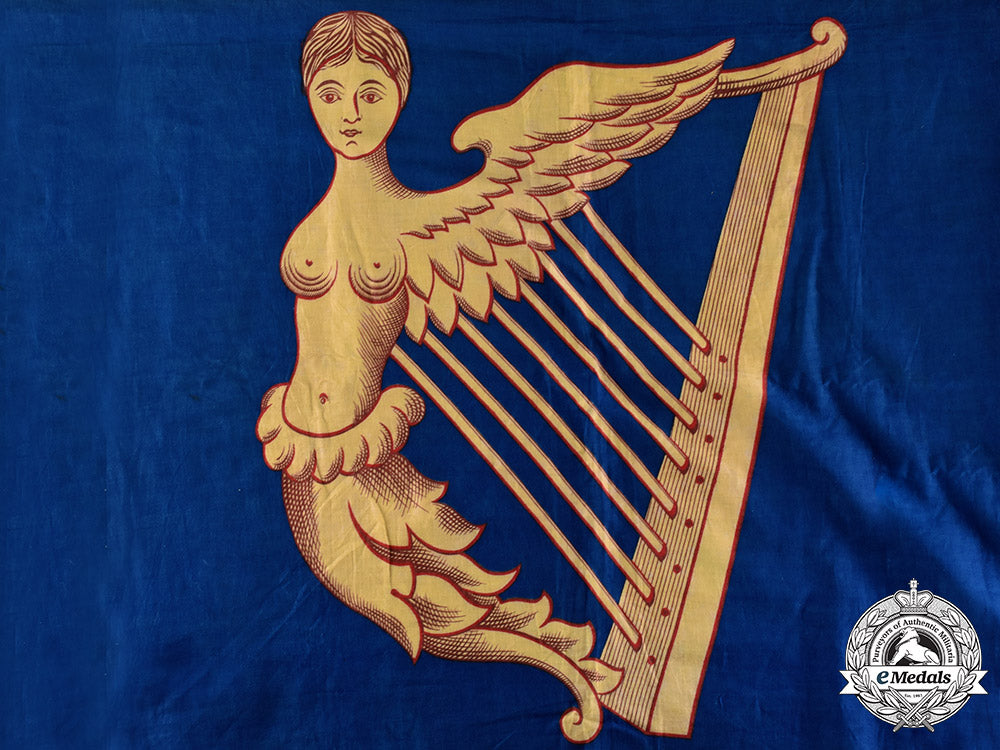
You May Also Like
Japan, Empire. A T90 Civil Defense Helmet, c.1943
W8287
Canada, Commonwealth; United Kingdom. A Mixed Lot of St. John Ambulance Association Medals and Uniform Insignia
M0231-134
Canada, Commonwealth. A Pair of St. John Ambulance Medals to Charles E. Jefkins, Hamilton, Ontario Superintendent
M0231-128
Canada, Commonwealth. A Lot of Awards, Documents, and Photographs to Peter Mori, St. John Ambulance Corps Superintendent for Hamilton, Ontario
M0231-122
Canada, CEF. A Large Oval Photo
C7175
-
Japan, Empire. A T90 Civil Defense Helmet, c.1943
W8287
Add to CartRegular price $275 USDRegular price $0 USD Sale price $275 USDUnit price / per -
Canada, Commonwealth; United Kingdom. A Mixed Lot of St. John Ambulance Association Medals and Uniform Insignia
M0231-134
Add to CartRegular price $135 USDRegular price $0 USD Sale price $135 USDUnit price / per -
Canada, Commonwealth. A Pair of St. John Ambulance Medals to Charles E. Jefkins, Hamilton, Ontario Superintendent
M0231-128
Add to CartRegular price $100 USDRegular price $0 USD Sale price $100 USDUnit price / per -
Canada, Commonwealth. A Lot of Awards, Documents, and Photographs to Peter Mori, St. John Ambulance Corps Superintendent for Hamilton, Ontario
M0231-122
Add to CartRegular price $225 USDRegular price $0 USD Sale price $225 USDUnit price / per -
Canada, CEF. A Large Oval Photo
C7175
Add to CartRegular price $120 USDRegular price $0 USD Sale price $120 USDUnit price / per
Do you have a similar item you are interested in selling?
Please complete the form and our client care representatives will contact you.
Sell Item
















